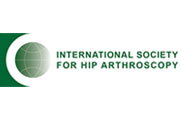Publications
Categories
Discoid lateral meniscus: evaluation and treatment
Although the etiology of the discoid lateral meniscus (DLM) has been the subject of debate, the entity is now believed to result from abnormal development secondary to a deficiency in normal attachments. In children younger than 10 years, snapping knee syndrome is pathognomonic for an unstable DLM. In adolescents, clinical presentation varies and often includes symptoms typically found with meniscal tears.
Bilateral cobalt alloy femoral component fracture: a case report
Even though at present femoral component fracture is a rare complication of total hip replacement, conditions still exist that predispose the prosthesis to failure. Component failure should be considered when a patient presents with pain in a previously asymptomatic hip, particularly in complex dysplastic hips requiring small stems, trochanteric osteotomy, and compromised cement technique
Postoperative management after total hip and knee arthroplasty
Despite major advances in the field of total joint arthroplasty, a standardized postoperative management protocol currently does not exist following total hip arthroplasty (THA) and total knee arthroplasty (TKA). A survey was mailed to the active members of the American Association of Hip and Knee Surgeons to investigate issues such as postoperative rehabilitation and activity restriction.
Os acromiale: evaluation and treatment
Os acromiale is a developmental aberration in which the distal acromion fails to fuse. This aberration is often discovered incidentally but may present with a clinical picture similar to that of subacromial impingement syndrome. Treatment for symptomatic os acromiale is initially nonoperative-activity modification, physical therapy, corticosteroid injection, use of nonsteroidal anti-inflammatory medication.
Arthroscopic versus mini-open rotator cuff repair: a comparison of clinical outcomes and patient satisfaction
This study compares the results of arthroscopic and arthroscopically assisted mini-open rotator cuff repair in a series of 84 patients who underwent repair of small, medium, or large tears between March 1997 and September 2001 with at least 2 years of follow-up.












